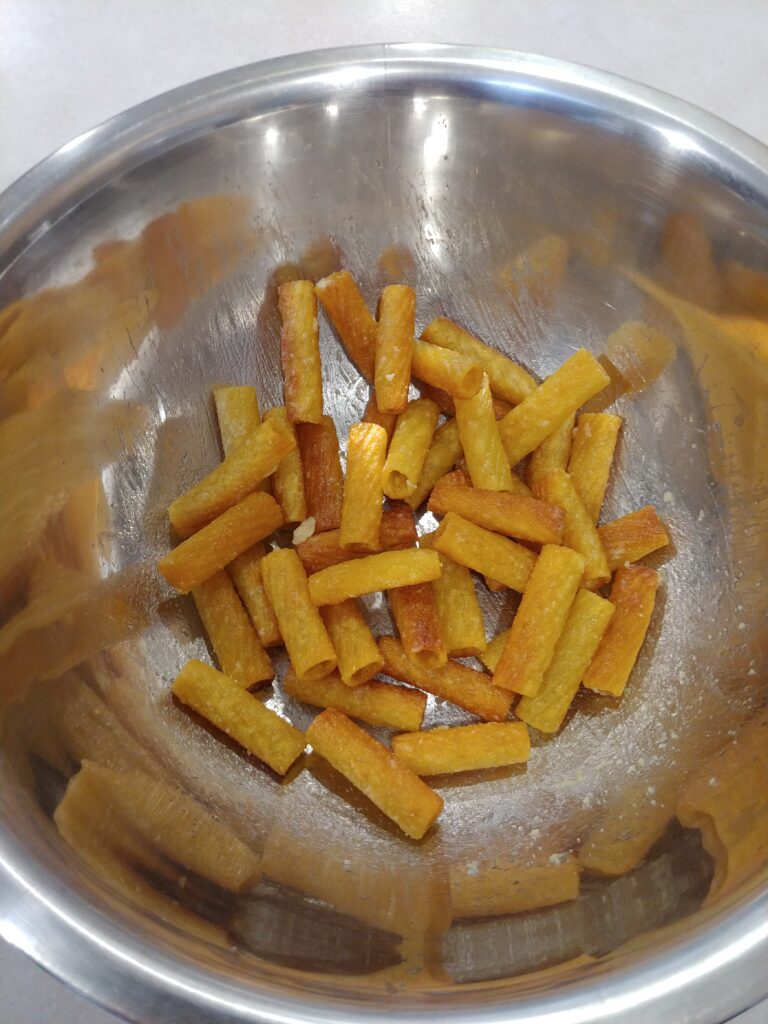Not much to say, pretty simple and great. Not much variations but one absolute recommendation is a lime “twist”. Lemon just doesn’t have the same balance as a lime in this drink and there are some personal preferences to the tonic being used.
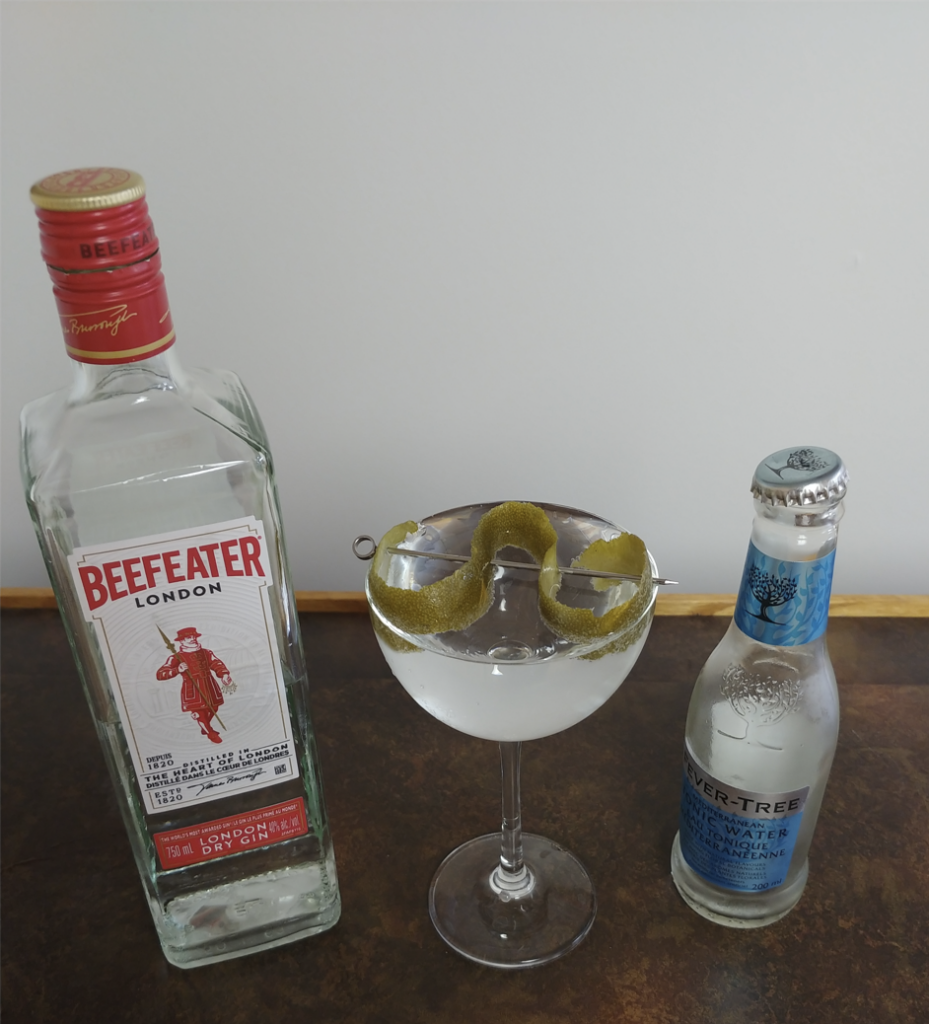
Food/Drink
Not much to say, pretty simple and great. Not much variations but one absolute recommendation is a lime “twist”. Lemon just doesn’t have the same balance as a lime in this drink and there are some personal preferences to the tonic being used.

Being interested in tech, food and having a chemical engineering degree this is a personal favourite topic of mine (and may be a bit of a rant). Pasteurization is all about statistics and killin’ microbes.
Microbes aren’t smart. They don’t sit around waiting for the 165F safe internal temperature for chicken (as deemed by the FDA below) and die. The 165F chosen by the FDA is based on a bit of science and statistics and by using the same tricks you can actually go lower.
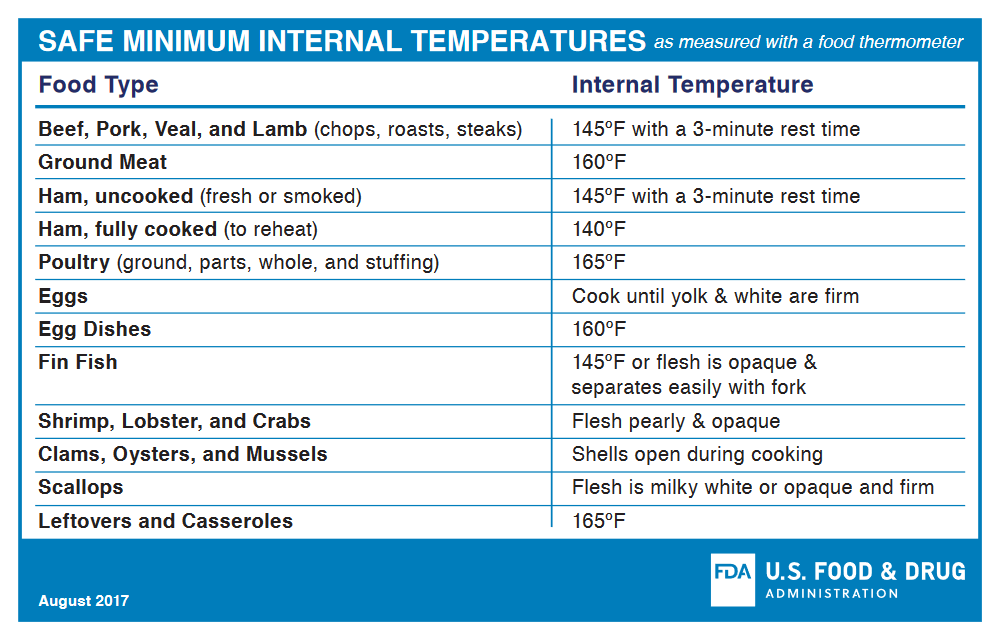
Microbe death follows a first order death equation dN = -k*N*dt where N is the size of the microbial population and k is the death rate. Where the factor k itself follows k = A*exp(-E/RT). Long story short, the decrease in a microbial population size is affected by time and temperature (different microbes behave differently).
This equation isn’t used too much in industry instead going with decimal reduction time z= (T2-T1)/[log(D1)-log(D2)] which defines the time required to reduce a microbial count by 90%.
What this all boils down to (great pun), is that the FDA safe internal temperatures values are based on the temperature at which we see a 7 log10 reduction in microbial content instantaneously. This is good for the government as their recommendation is very conservative and they can’t be blamed for anything other than dry chicken.
To cheat the system we can achieve the same 7 log10 reduction at a lower temperature but a longer time. There are curves for this but for example with chicken we can achieve this with 58c for 64 minutes meaning we can have both safe and juicy chicken (talk about having your cake and eating it too).
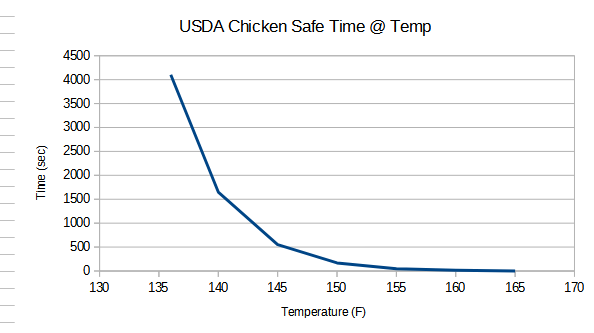
This is cool and all but the astute will note that a 7 log reduction is 99.99999% effective but not 0 and microbes just like cockroaches will multiply. If you leave one alive it will come back with more. For this the government uses a bit of statistics and for shell stable foods uses a 12 log reduction. Now a 12 log reduction also doesn’t guarantee 0 microbes but we get down to such small numbers that spoilage probability and economics take over. For a given set of starting microbes, a 12 log reduction and for R amount of containers you can estimate how many containers will have microbes out of a batch and if it an acceptable amount. So unfortunately the chances of buying processed food and having food poisoning are never 0 but are managed to safe levels.
Working in the food manufacturing industry, pasteurization is a critical step to ensure food safety. Now I don’t have any industrial ovens or equipment at home but I can get fairly close with home equipment. A follow up to my strawberry compote recipe https://adam-s.ca/strawberry-rhubarb-compote/ I decided to try pasteurizing the drink so I can extend its shelf life as I will be bringing these on a outdoor trip a week from now.
I will not get too deep into thermal death kinetics (but its a great topic for another time). But for pasteurization time and temperature matter most. I can use high temperature for a short time or lower temperature for a longer time. For this case I pasteurized at 90c for 1 hour (plus the startup time). I setup my sous vid for 194F (90c) and a probe along side it and put in my bottles and jars to be pasteurized (picture bellow). In industry I have used Datapaq at few different jobs to confirm the time at temperature which is critical to process and was able to emulate that with my own probe & logger. I was able to confirm exactly 1 hr at 90c and almost 2 hours at 80c which proves sufficient for pasteurization.
This was a fun project and I was very happy to see such a consistent temperature profile, now if only temperature profiles were so “text book” at work :D.
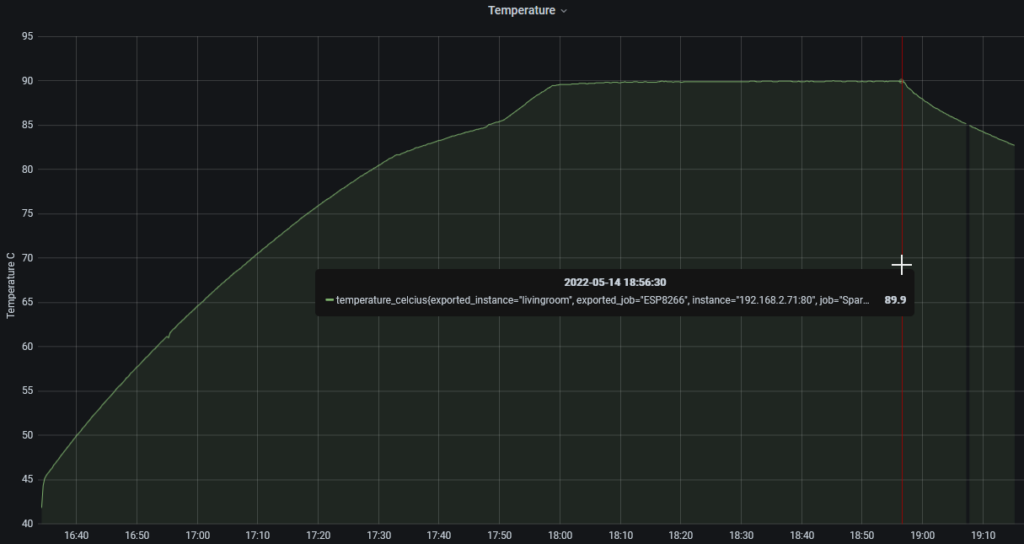
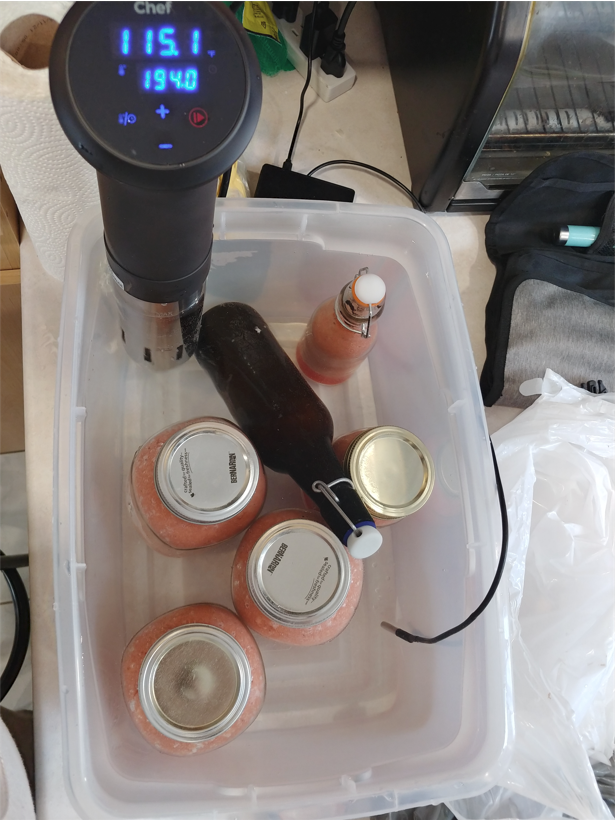
I have 3 large rhubarb bushes in my garden and inevitably end up with too much rhubarb on my hands. After passing some off to family/friends I use the rest up either in pie or in a delicious compote. I don’t use any particular recipe just usually eyeball half half rhubarb to strawberry and adjust based on taste afterwards.
This taste great out of the pot while its still warm as a great comfort drink (Grandma makes the best “Kompot”), but lately I have been enjoying this chilled on hot days. For this I usually bottle the compote while warm and then refrigerate. It is fairly acidic so it keeps well in the fridge for at least a week though in my experience this delicious drink is finished well before that time.
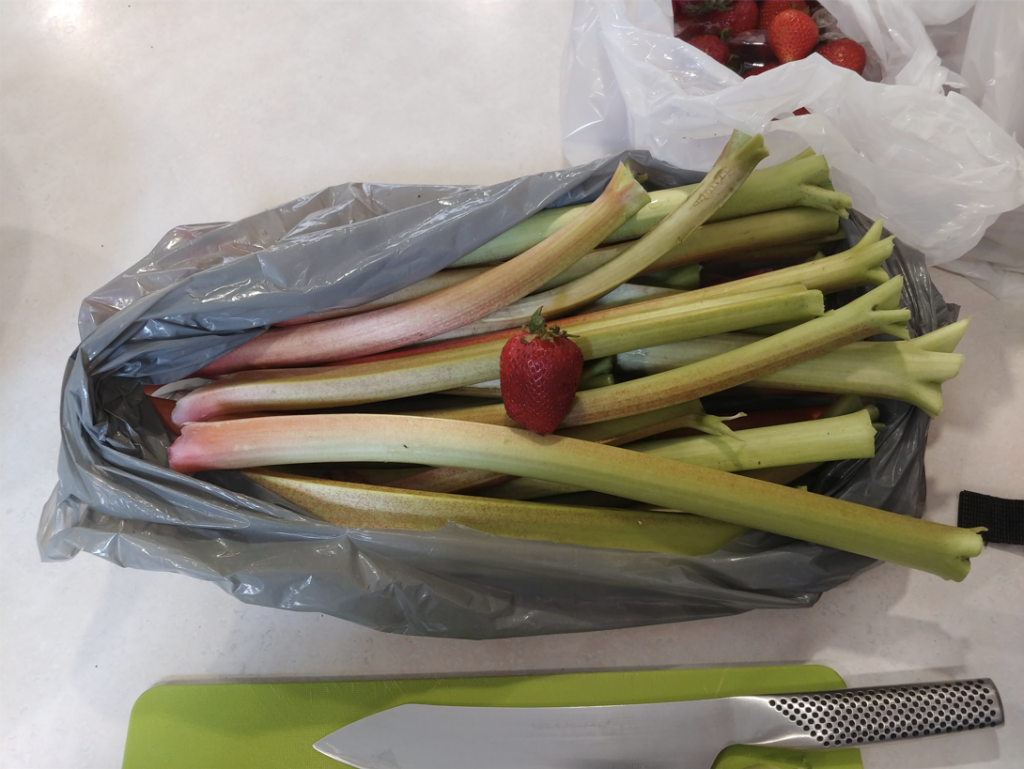
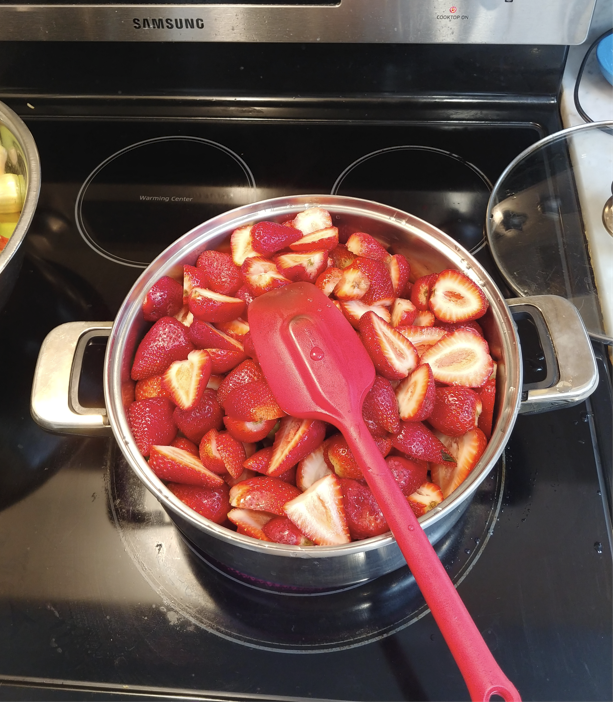
I tried my hand at the Ramos Gin Fizz. A fair bit of a hand workout but most importantly a visually great drink. Important notes, you should do a “dry” shake with just a few ice cubes for 2 minutes and then a full proper shake with ice for another 2-4 minutes. Also for my collins’ glass I use 1.5x recipe.
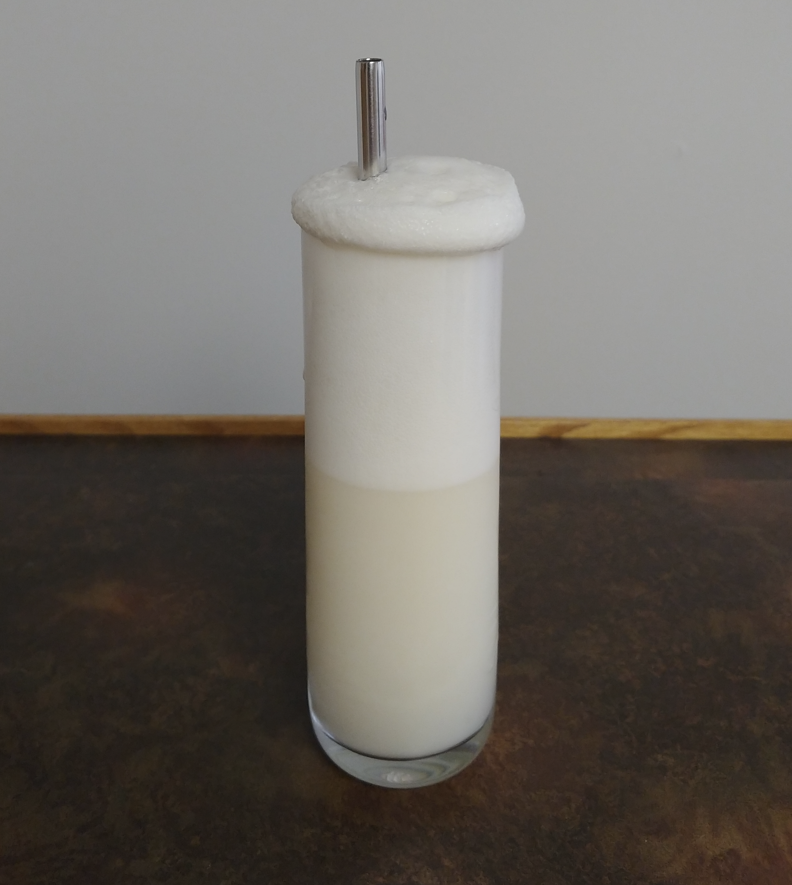
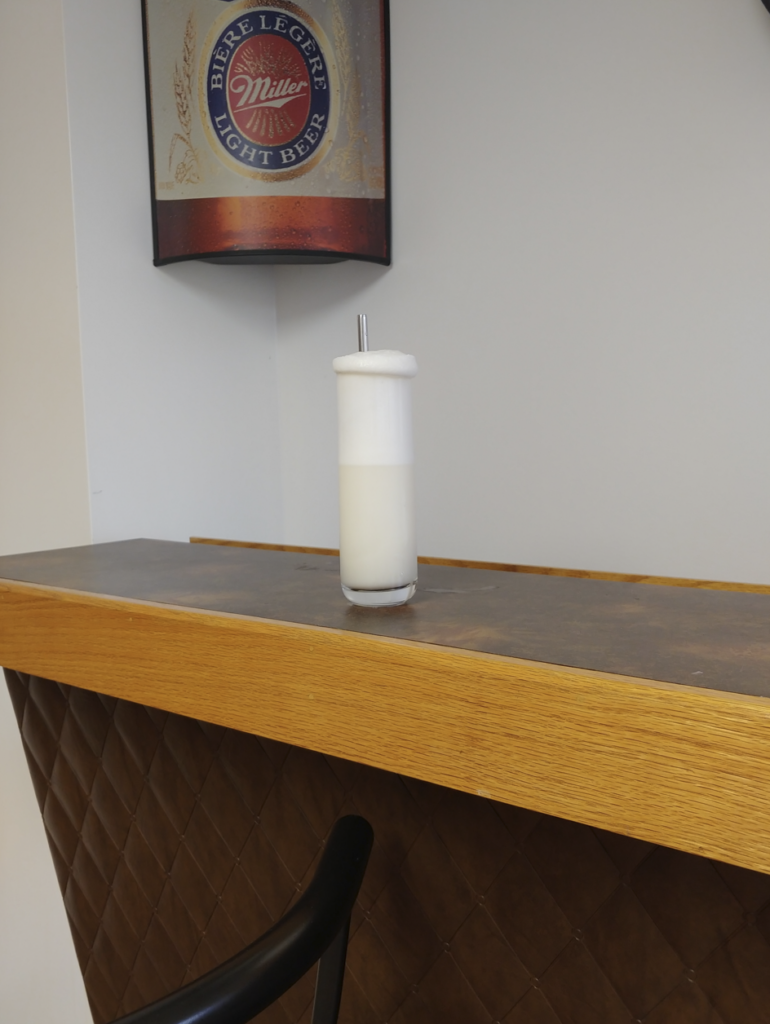
I have purchased a new sous vide machine and as always it has to be broken in and tested. I have found digital temperature sensors to be repeatable but sometimes inaccurate and so offset have to calculated for each of these machines.
I have a master chef unit and the test was controlling water at 132F (55.56 C). I dropped in a logging probe to confirm this. The chart below shows a very tight temperature grouping but the average is at 55C and not the 55.56 the sous vide was controlling to. So in the end I have a very repeatable and controllable unit but it is 0.5C off which I can alwaysaccount for.
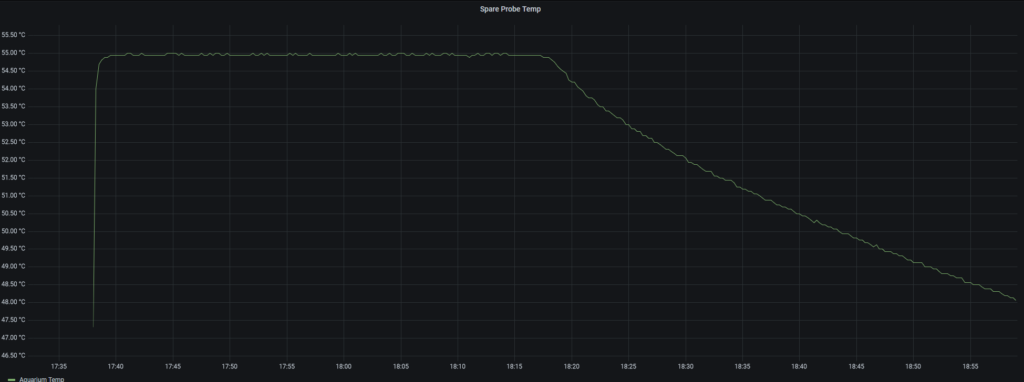
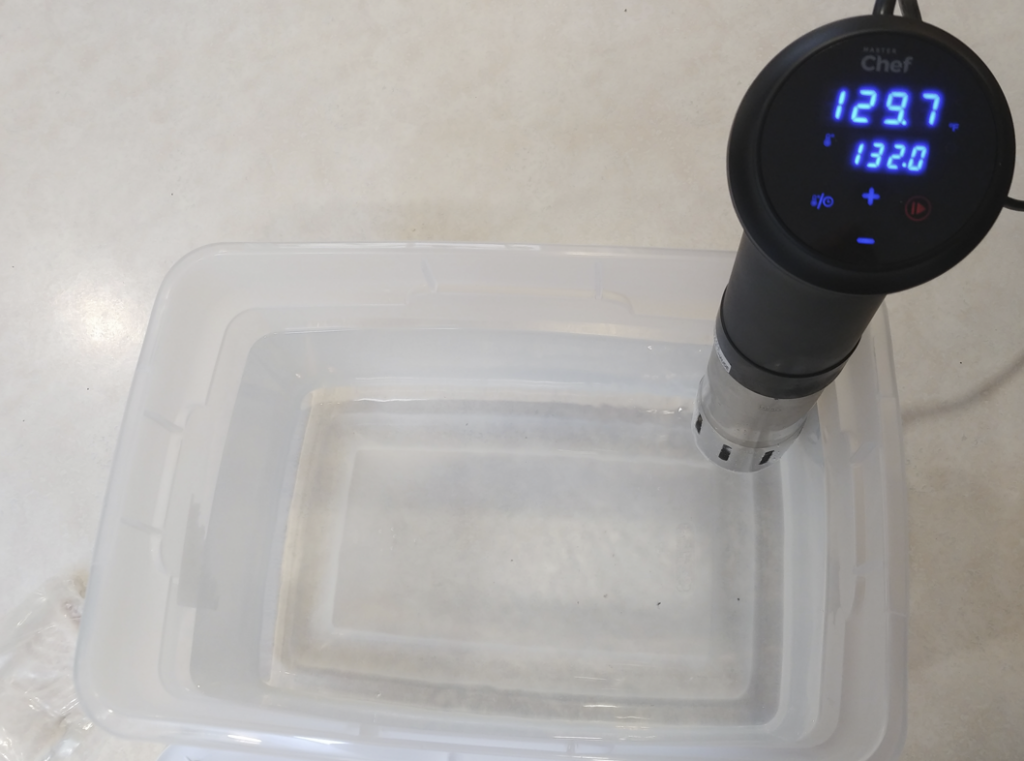
An Easter classic, the rum baba makes a delicious treat. It is a bit intensive and messy but well worth the effort. One key factor is the raisins themselves have to be soaked for at least 4 hours as when trailed at shorter intervals they weren’t retaining any of the flavor. Additionally the soaking liquid has to be applied hot and can quite literally be squeezed into the cakes.



A quick and easy lunch. Couscous was cooked in a lemon juice mixture, flash chilled and the tossed with cucumber, feta, tomato and onion. Micro greens and a little tomatoe rose garnish. Nice and appealing.
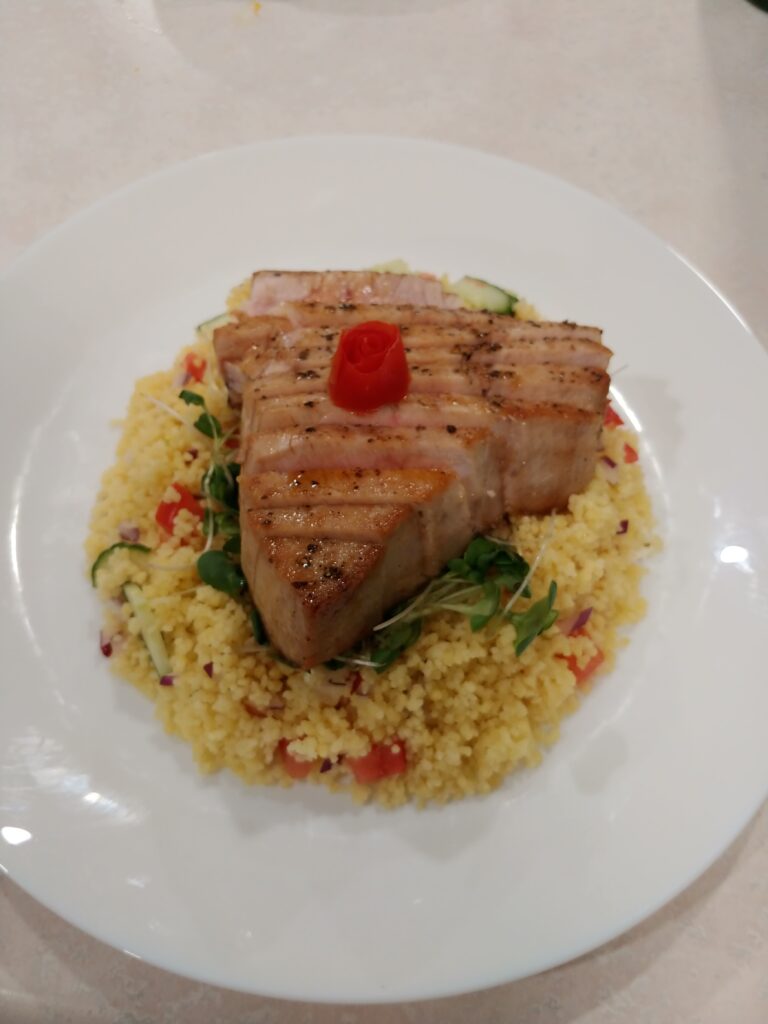
Just a quick picture of my classic avocado salad.
Just a plain spinach base, ring of avocado and then tomatoes sprinkled around. 2 variations are whether to use a tomato peel as the “rose” in the centre which then matches the color or to go a bit more decadent and use a smoked salmon rose. If using smoked salmon a garlic/dill dressing is a must. If struggling with making the rose place in freezer for a bit so it stiffens up and is easier to work with.


When making pasta I find that usually I end up overestimating and making too much noodles. Rather than ruining the pasta to sauce ratio an interesting trick is to fry extra pasta up in oil and toss with Parmesan cheese. Not going to go into recipe but just drain the pasta, add oil to a pan and toss it in.
